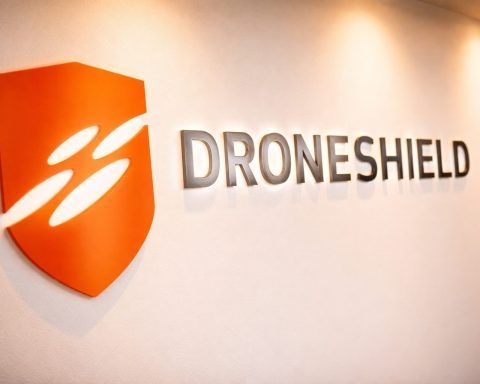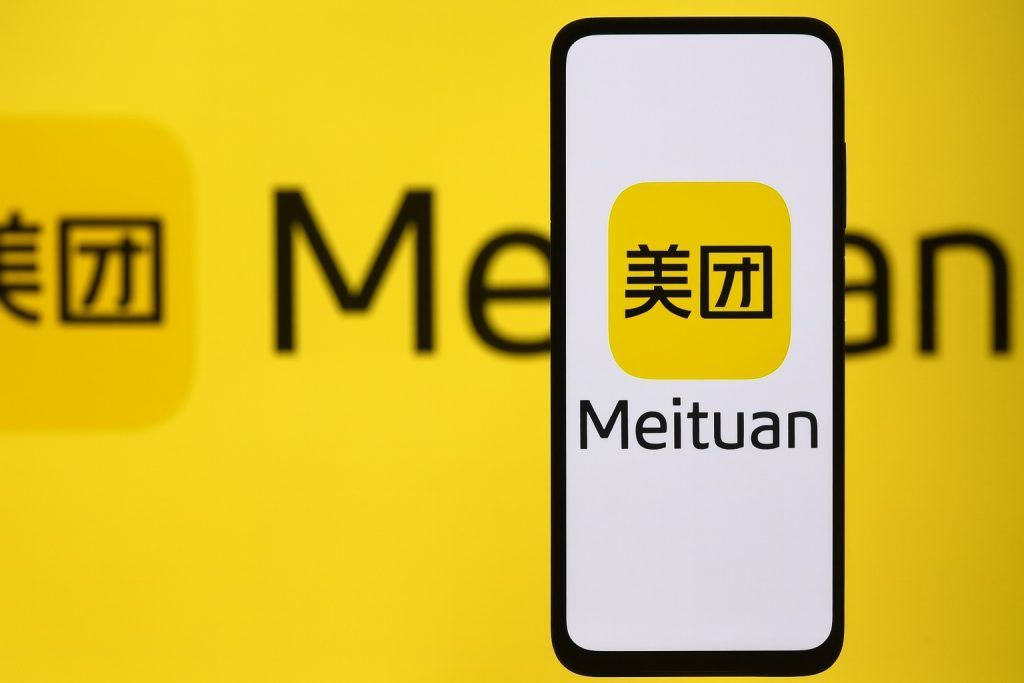- Stock Run: QCi’s stock has exploded this year, surging roughly 2,500–3,000% in the past 12 months [1]. After trading under $1 a share in late 2024, QUBT hit highs above $25 (52-week range ~$0.65–$27.15) and now trades in the mid-teens (≈$15 as of Oct 22, 2025) [2] [3]. (This puts market cap around $3–4 billion [4] [5].)
- Massive Fundraising: QCi has raised a staggering $1.64 billion since Nov 2024 via equity placements. In Sept 2025 it placed ~26.9 million shares for $500 M [6], and in early Oct a 37.18 million-share private offering brought in another $750 M [7] [8]. Management says these oversubscribed raises give QCi “the strongest balance sheet among publicly traded quantum companies,” sufficient to fund growth through 2028 [9].
- Government Support: Federal interest is high. Reports cite the U.S. government (Trump administration) mulling equity stakes in quantum firms like QUBT in exchange for R&D funding [10]. QCi also won direct government contracts this year: a National Institute of Standards and Technology (NIST) foundry deal for thin-film photonic chips [11] and NASA subcontracts (e.g. a ~$406K Langley LIDAR project) using its Dirac-3 quantum machine [12]. The interim CEO, Dr. Yuping Huang, says he will focus heavily on U.S. government contracting as QCi’s next step [13].
- Technology Focus: QCi builds room-temperature photonic quantum devices (lithium-niobate chip-based “entropy” processors and optical systems) for optimization, AI, and cybersecurity. It opened a photonic chip foundry in Tempe, AZ (commissioned Q1 2025) to serve defense and commercial customers [14] [15]. The company recently showcased a “Quantum Secure Solution” encryption platform (entangled photons) at an industry conference, touted as a milestone for real-world deployment [16]. It has pilot projects with NASA (phase-unwrapping and LIDAR) and even sold a $332K quantum-secure testbed to a major bank [17].
- Financials: Despite the hype, revenues are essentially zero. Q2 2025 sales were only $61K (down 67% YoY) while net loss was $36M [18] [19]. In 2024 the company posted ~$0.37M revenue and a $68.5M loss [20]. With ~$349M in cash on hand after the latest raises [21], QCi has plenty of runway, but burn remains high. Its share count ballooned to ~224 million [22] after all the offerings, diluting existing owners. The resulting valuation is extreme – one analysis notes QCi’s trailing price-to-sales ratio is over 10,000× [23].
- Analyst Sentiment: Wall Street is split. The consensus rating is a Strong Buy (3 analysts) with an average 12-month target of ~$26.33 [24] (implying ~80% upside). But some caution: Zacks Investment Research recently classified QUBT as a Hold, noting that “minimal revenues, widening losses and high execution risk” make now “not an ideal time to buy” [25] [26]. Analyst targets vary wildly (roughly $15–$40) reflecting the stock’s volatility and uncertainty [27].
News Highlights
Massive Funding Rounds: In the past two months QCi has drawn headlines with record capital raises. On Oct 5, 2025 the company announced an oversubscribed private placement of 37,183,937 shares at market price, raising $750 million [28]. This followed a Sept 21, 2025 placement of 26,867,276 shares for $500 million [29]. CEO Dr. Yuping Huang celebrated the extra capital, saying it provides runway through 2028 and leaves QCi with the “strongest balance sheet among publicly traded quantum companies” [30]. (Investors note, however, that issuing ~64 million new shares in 6 weeks has massively increased share count.)
Stock Volatility: QUBT’s price has whipped up and down on news. In early October it briefly climbed above $25 on bullish market momentum [31]. For example, following JPMorgan’s big tech-investment announcement (see below), QCi jumped ~12% to $21.46 on Oct 14 [32]. But on Oct 16 the stock plunged about 7–12% alongside other quantum plays (Fast Company reports QUBT fell 11.73% that day) [33]. That drop was driven not by any QCi-specific news, but by a broader market scare in regional banks, which triggered profit-taking after the quantum sector’s huge run [34] [35]. (Indeed, trading volumes have been enormous throughout October.)
Leadership Change: In April 2025 QCi announced the retirement of long-time CEO Dr. William McGann [36]. Dr. McGann was credited with spearheading product launches (Dirac-3 machine, photonic “entropy” processor) and completing the chip foundry [37]. He handed the reins to Dr. Yuping Huang (a noted photonics researcher) as interim CEO [38]. The board praised McGann for “substantial progress… completing our chip foundry, and strengthening our financial position” [39]. Dr. Huang, who helped merge QCi with his own startup in 2022, says his focus will be on leveraging the company’s federal partnerships: “contracting with the US government will be a substantial part of Dr. Huang’s focus” going forward [40].
Government Interest: On Oct 22, 2025 Reuters reported that the Biden administration is in talks to take equity stakes in several U.S. quantum tech firms, including QCi [41]. This follows a growing trend of federal support: earlier in 2025 QCi won its first direct Department of Commerce/NIST contract to develop thin-film lithium niobate photonic chips [42]. It also won NASA contracts – notably a ~$406K NASA Langley subcontract to use its Dirac-3 machine to remove sunlight noise from LIDAR data [43], and a 2024 NASA Goddard award to tackle interferometric image processing with Dirac-3 [44]. These deals underscore QCi’s credibility in government R&D circles. Even JPMorgan Chase’s recent announcement of a $10 billion fund for strategic tech indirectly boosted QCi; its stocks surged on Oct 14 as investors queued in, even though JPMorgan did not name specific recipients [45]. JPMorgan CEO Jamie Dimon highlighted quantum computing as a “frontier technology” vital to national security [46], helping fuel optimism in the sector.
Financial Performance & Stock Data
Minimal Revenue, Heavy Losses: To date QCi has generated essentially no revenue. In 2024 it made just $373K in sales [47]. In Q2 2025, revenue plunged to $61K while operating expenses produced a $36M loss [48]. The company repeatedly emphasizes that it is still pre-commercial. Its current focus is on technology development and building manufacturing capacity, not selling machines at scale. The stock’s massive valuation (>$4B market cap) thus relies almost entirely on promises of future growth [49].
Cash Position: The recent equity raises have loaded QCi with cash. After the Oct 2025 funding the company reported roughly $349 million on hand [50]. This dwarfs its negligible sales, giving an extremely high cash-per-share. Management says this cash runway will finance product commercialization, acquisitions, and scaling the foundry. On the debit side, note the dilution: shares outstanding have grown to ~224 million [51], meaning earnings (or eventual profits) must cover a larger base.
Key Dates: QCi operates on a calendar fiscal year. Its next quarterly results (Q3 2025) are due November 13, 2025 [52]. Investors will watch for any progress notes (foundry shipments, product trials) at that report. The stock is also included in the Russell 2000/3000 indexes as of mid-2025 [53], so passive funds will keep it on their radar.
Expert Insights
Analyst Consensus: Wall Street analysts are cautiously bullish. All three covering analysts rate QUBT as Buy/Strong Buy, with a blended 12-month target around $26.33 (+~77% from mid-Oct levels) [54]. Notably, Ascendiant Capital just hiked its target to $40, and Barron’s cited a bullish note predicting an additional 86% upside [55]. Lake Street Capital has a $24 target (Buy), citing QCi’s “first-mover advantage” in integrated photonic quantum chips [56]. Overall price targets cited in recent reports range roughly from $15 to $40 [57], reflecting both the enormous potential and the uncertainty.
Skeptical Views: Other experts urge caution. Zacks Research (via Nasdaq) explicitly classifies QUBT as a “Hold”. Their report emphasizes that “minimal revenues” and “widening losses” make now a risky time to buy [58]. The analysis notes that after Q2’s dismal sales, growth depends entirely on future tech adoption – a long, uncertain path. One market commentator succinctly observed: QUBT’s “mind-bending rise has divided analysts and experts” [59]. Some see a “quantum gold rush” ahead given government and commercial interest [60], while others compare it to a speculative bubble unless products prove themselves. As Motley Fool phrased it: “Only time will tell whether QCi lives up to expectations… in the near term, hope and hype could continue to propel the stock” [61].
Management Commentary: Management has pushed the narrative of technological progress. In CEO Huang’s words, the company’s oversubscribed raises “validate our vision, technology, and roadmap” and give QCi the cash to execute long-term plans [62] [63]. The board (via Dr. Huang) credited retiring CEO McGann with setting a strong foundation — noting “substantial progress, launching new products, … completing our chip foundry, and strengthening our financial position” [64]. Investors will watch closely whether the promised photonic machines and chips start generating revenue.
Industry Trends and Outlook
Quantum Sector Boom: QCi is part of the so-called “Quantum Four” public hardware companies (with IonQ, Rigetti, and D-Wave) that have captured investor attention. All four saw wild swings in October – QCi fell on Oct 16 along with peers [65] and then rallied again on broader bullish news [66]. In 2025 these stocks have dramatically outperformed broader tech indices. For context, Fast Company notes that Rigetti is up ~5000% YTD and D-Wave/QUBT ~400%+ [67]. Many attribute this to a combination of real technology milestones and massive hype/fund flows. Major tech players (IBM, Microsoft, Amazon, Google) are quietly investing in quantum R&D, but today’s small pure-plays like QCi uniquely carry valuation tied to potential breakthroughs.
Government and Defense Focus: Quantum computing is increasingly seen as strategic by governments. The US and allies are pouring money into quantum research (for code-breaking, sensing, etc.) to avoid falling behind. The JPMorgan $10B plan [68] and reports of federal equity stakes in U.S. firms [69] highlight this. In practice, companies like QCi are winning small government contracts now (as noted above). This suggests continued revenue streams down the line, especially in defense and aerospace. QCi is positioning itself as a domestic supplier of quantum photonics (e.g. its NIST foundry contract [70] and a reported Fortune-500 defense order [71]), aligning with national tech security goals.
Investment Takeaway: For general investors, QUBT is a high-risk, high-reward play. Its fundamentals (tiny sales, huge losses) lag far behind its valuation, so the stock price is driven by expectations. If QCi’s technologies and government relationships lead to real products, the upside could be enormous – hence some analysts’ lofty targets (as high as $40 [72]). But if execution falters or the sector cools, the shares could fall sharply. The next catalysts will likely be updated financials (Nov 2025 earnings), first product revenues or major orders, and any government policy news on quantum investment. Until then, experts advise weighing the speculative nature of QUBT against the megatrend of quantum computing.
Sources: Authoritative news and company releases (Reuters, Nasdaq, PR Newswire) as well as analysis from financial media and industry publications [73] [74] [75] [76] [77] [78] [79] [80] [81] [82] [83] [84]. Each fact above is backed by a cited source as noted.
References
1. ts2.tech, 2. stockanalysis.com, 3. ts2.tech, 4. stockanalysis.com, 5. ts2.tech, 6. titanpartnersgrp.com, 7. titanpartnersgrp.com, 8. ts2.tech, 9. ts2.tech, 10. www.reuters.com, 11. quantumcomputinginc.com, 12. quantumcomputinginc.com, 13. www.nasdaq.com, 14. www.nasdaq.com, 15. quantumcomputinginc.com, 16. ts2.tech, 17. ts2.tech, 18. www.nasdaq.com, 19. ts2.tech, 20. stockanalysis.com, 21. thequantuminsider.com, 22. stockanalysis.com, 23. ts2.tech, 24. stockanalysis.com, 25. www.nasdaq.com, 26. www.nasdaq.com, 27. ts2.tech, 28. titanpartnersgrp.com, 29. titanpartnersgrp.com, 30. ts2.tech, 31. ts2.tech, 32. www.fastcompany.com, 33. www.fastcompany.com, 34. www.fastcompany.com, 35. ts2.tech, 36. www.nasdaq.com, 37. www.nasdaq.com, 38. www.nasdaq.com, 39. www.nasdaq.com, 40. www.nasdaq.com, 41. www.reuters.com, 42. quantumcomputinginc.com, 43. quantumcomputinginc.com, 44. quantumcomputinginc.com, 45. www.fastcompany.com, 46. www.fastcompany.com, 47. stockanalysis.com, 48. www.nasdaq.com, 49. ts2.tech, 50. thequantuminsider.com, 51. stockanalysis.com, 52. stockanalysis.com, 53. www.nasdaq.com, 54. stockanalysis.com, 55. ts2.tech, 56. ts2.tech, 57. ts2.tech, 58. www.nasdaq.com, 59. ts2.tech, 60. ts2.tech, 61. ts2.tech, 62. titanpartnersgrp.com, 63. ts2.tech, 64. www.nasdaq.com, 65. www.fastcompany.com, 66. www.fastcompany.com, 67. www.fastcompany.com, 68. www.fastcompany.com, 69. www.reuters.com, 70. quantumcomputinginc.com, 71. quantumcomputinginc.com, 72. ts2.tech, 73. www.reuters.com, 74. titanpartnersgrp.com, 75. www.nasdaq.com, 76. www.fastcompany.com, 77. www.fastcompany.com, 78. stockanalysis.com, 79. quantumcomputinginc.com, 80. quantumcomputinginc.com, 81. thequantuminsider.com, 82. ts2.tech, 83. ts2.tech, 84. ts2.tech







